London’s 35 bridges over the River Thames whisper tales of Roman conquests, Victorian ingenuity, and soaring modern visions. Among them stand London Bridge and its grand neighbour, Tower Bridge. Despite their stark differences in history and design, some visitors often confuse London Bridge and Tower Bridge, unaware of the rich narratives that set them apart.
London Bridge
London Bridge is on the site of the original Roman crossing of the River Thames. Rebuilt several times, the current London Bridge was opened by the late Queen Elizabeth II in 1973 when the previous one proved not strong enough to carry the heavy traffic crossing it. The old London Bridge, designed by Sir John Rennie and opened in 1831, was dismantled and moved to Lake Havasu in the United States, where an American businessman, Robert McCulloch, had it re-erected next to a housing development he was building there.
London Bridge cost Mr McCulloch $2.5 million – plus the considerable cost of shipping and rebuilding it – and provoked a good deal of amusement from people who said that he had intended to buy the nearby – and much more striking – Tower Bridge near the Tower of London. In fact, McCulloch knew he would never be able to buy the iconic and famous Tower Bridge. However, the relocated London Bridge proved a great success and attracted many extra buyers to his Havasu development.
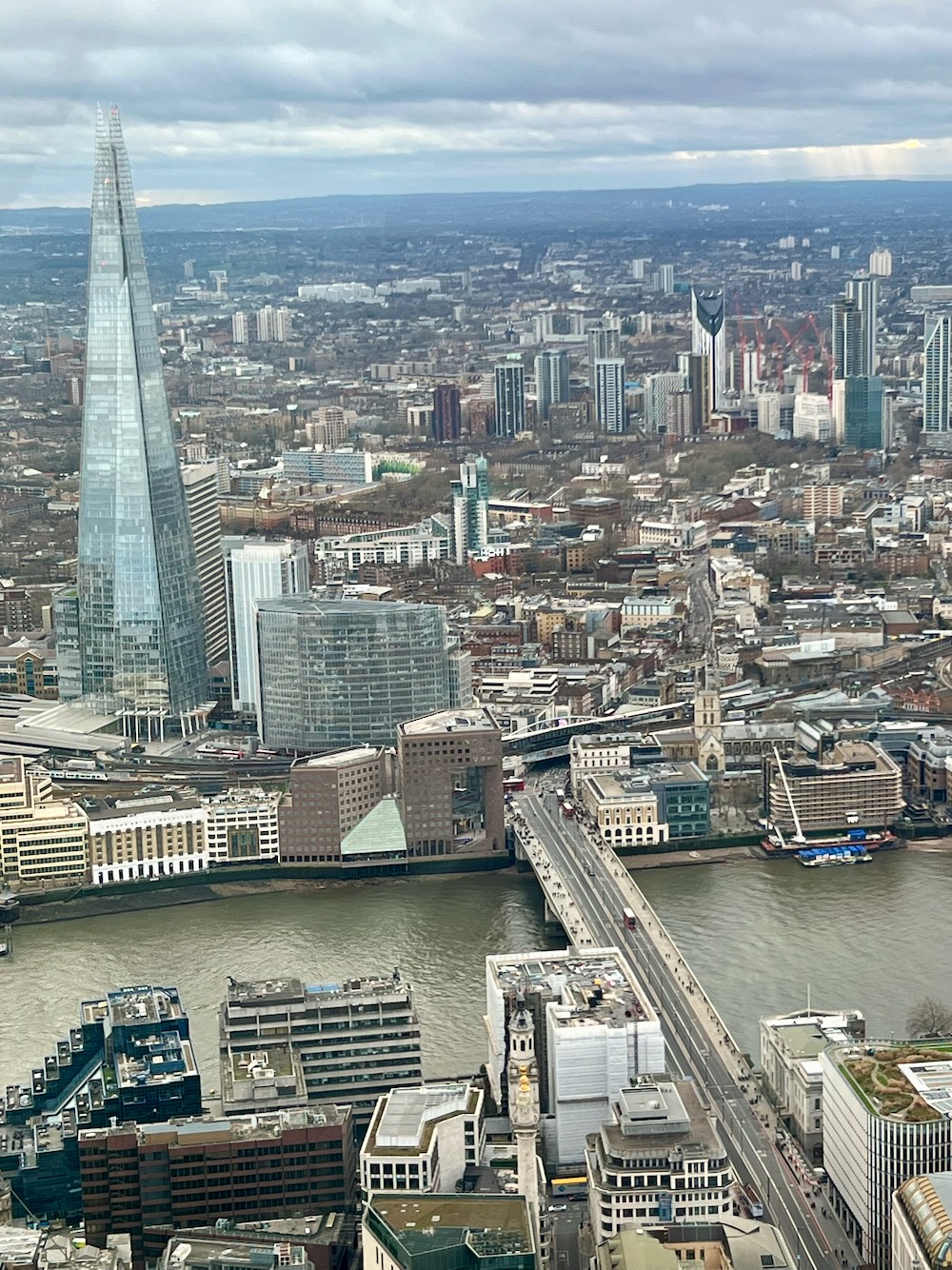 View of London Bridge from Horizon 22. Photo Credit: © Ursula Petula Barzey.
View of London Bridge from Horizon 22. Photo Credit: © Ursula Petula Barzey.
Tower Bridge
Tower Bridge, on the other hand, celebrated its 125th birthday in 2019. It was designed by Sir Horace Jones and opened by the then Prince of Wales (later Edward the Seventh) on 30th June 1894 after a building programme that took six years and cost £1.2 million (equivalent to around £132 million today). Tower Bridge soon became one of London’s most iconic landmarks and is featured in films such as Sherlock Holmes (starring Robert Downey Jr) and Spiderman: Far From Home. Tower Bridge has been open to visitors since 1982 and gives people the opportunity to walk over the Thames looking down at the river through its reinforced glass floors.
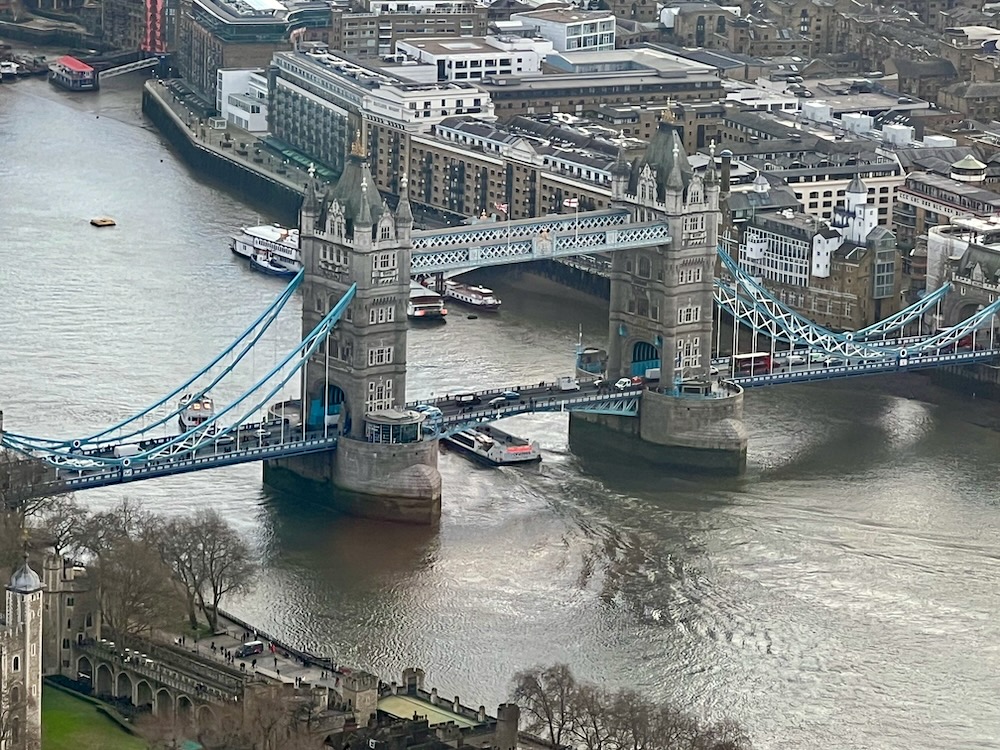 View of Tower Bridge from Horizon 22. Photo Credit: © Ursula Petula Barzey.
View of Tower Bridge from Horizon 22. Photo Credit: © Ursula Petula Barzey.
Apart from its distinctive appearance, Tower Bridge’s most famous features are the bascules which can be lifted up to allow large boats and ships to pass underneath. All sorts of vessels use this function, from small boats with tall masts to large ocean-going cruise ships which moor next to HM Belfast, a Royal Navy cruiser launched in 1938, which saw service in World War Two and which is now a popular naval museum.
Those who want to have the bascules lifted to allow their vessels to pass through must give at least twenty-four hours notice to the bridge authorities. The process – from the alarm sounding to stop road traffic on the bridge to its resumption – usually takes only five or six minutes, although larger vessels might take up to half an hour. The opening can happen several times a day and, on average, about 850 lifts occur each year.
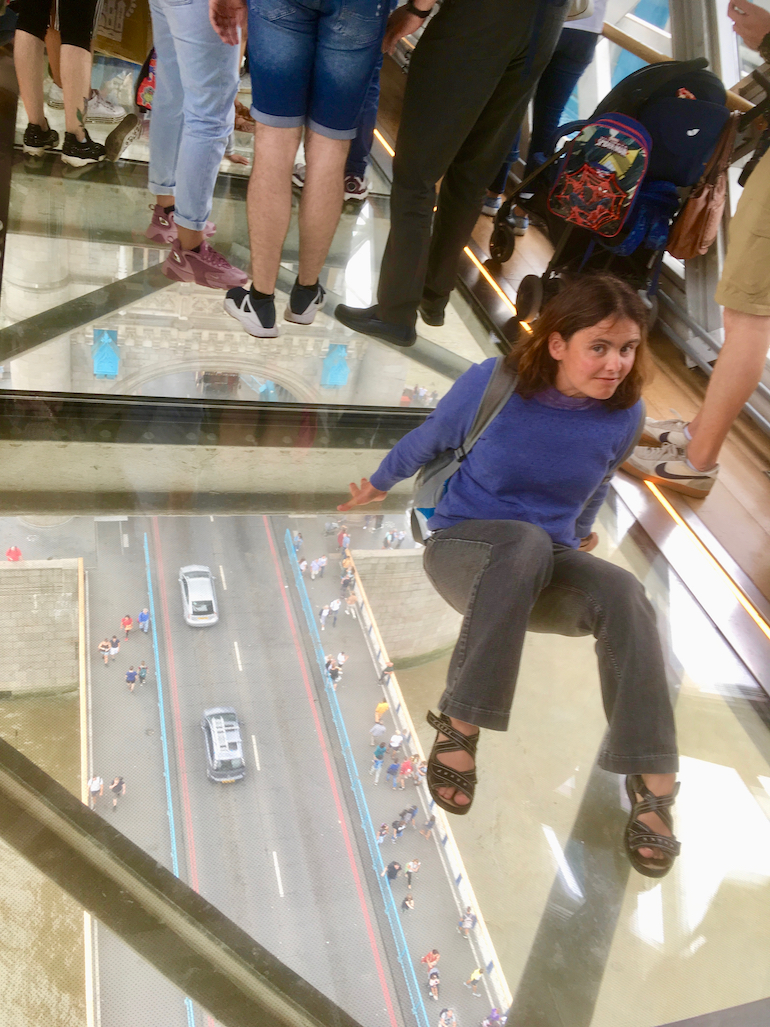 A young lady sitting on the glass floor at Tower Bridge in London. Photo Credit: © Edwin Lerner.
A young lady sitting on the glass floor at Tower Bridge in London. Photo Credit: © Edwin Lerner.
Details of when the bridge is due to open to allow ships and yachts through – as well as opening times and prices of the bridge – can be found on the bridge website.
The successful Russian businessman Roman Abramovich, who formerly owned Chelsea football club, and is one of the world’s richest men, took advantage of the bridge-lifting facility when he brought his $400 million yacht Eclipse – complete with two swimming pools – into London in 2012 to watch the Olympics there. And how much did it cost Abramovich (and others) to have Tower Bridge opened? Precisely nothing.
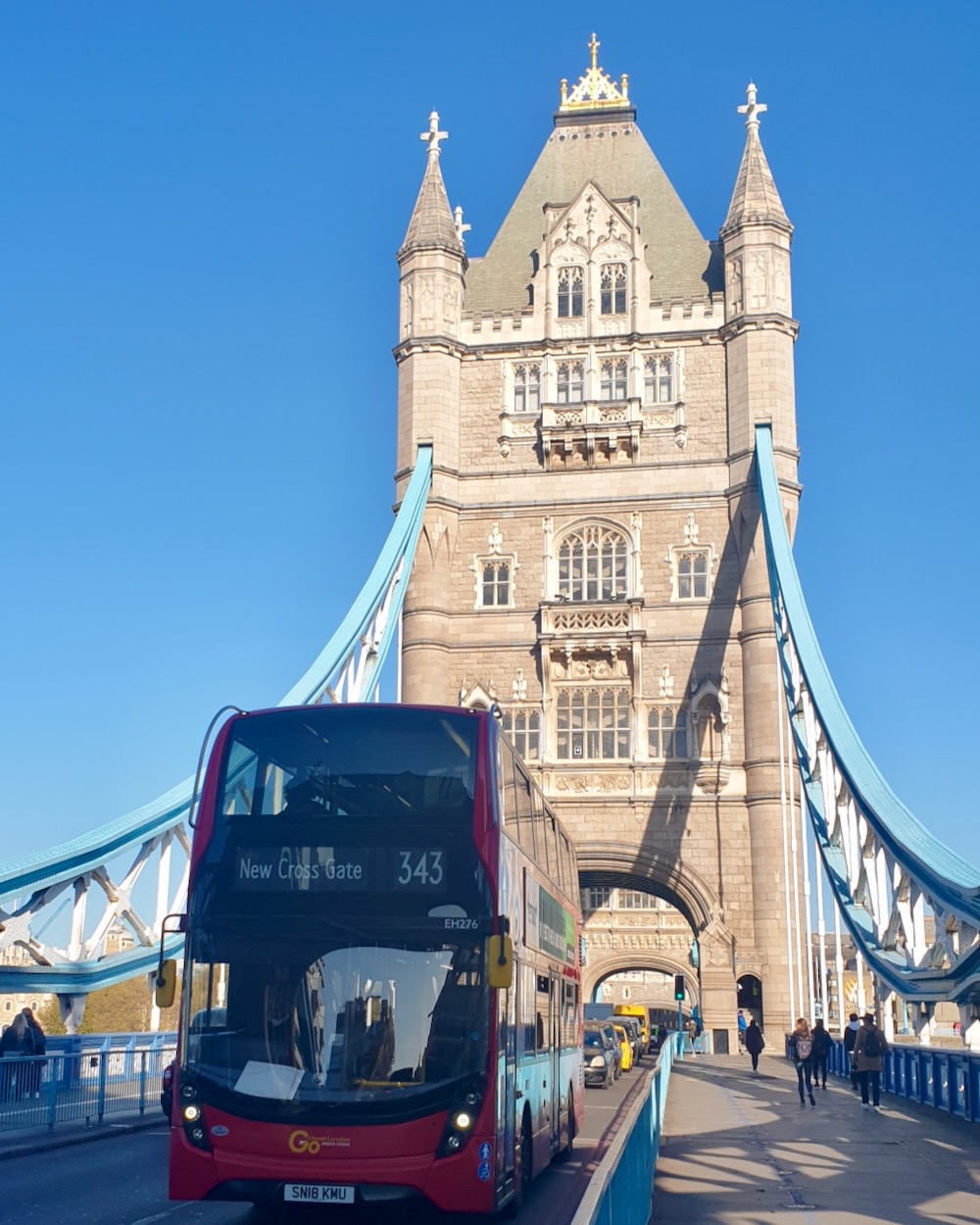 Walking across Tower Bridge in London. Photo Credit: © Ursula Petula Barzey.
Walking across Tower Bridge in London. Photo Credit: © Ursula Petula Barzey.




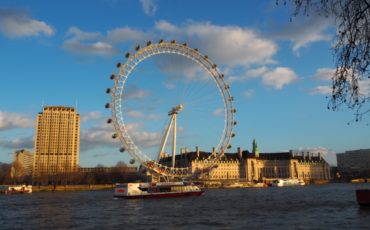


Leave a Reply